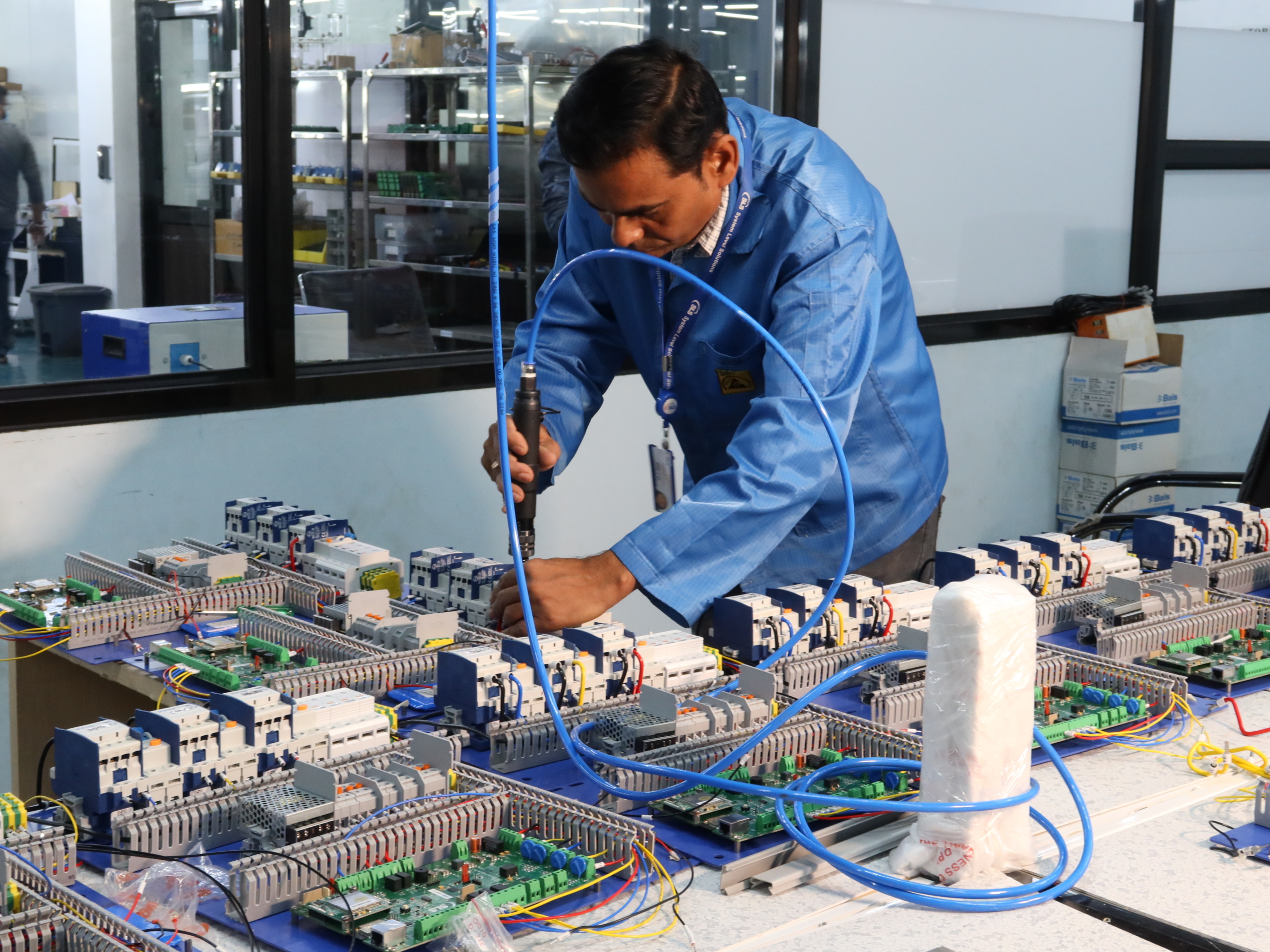Tom Gassert wrote the groundbreaking manual Health Hazards in Electronics in 1985. His work since then bridges occupational health, climate change impacts, pandemics, armed conflicts, and the unethical use of artificial intelligence. Hesperian is grateful for the advice he generously shared with us in the writing and producing of our Workers Guide to Health and Safety and now for his invaluable feedback and insight to ensure the Workers’ Guide continues to address the needs of today’s factory workers, particularly those in the electronics industry.
From consumer products and social media to military applications and the development of new medical treatments, our world is more reliant than ever on technology and electronics. As the industry expands to meet unprecedented demand, we are beginning to see the ways this rapid industrial development is impacting workers and their communities at every stage of the production cycle.
Environmental and occupational health challenges
The production of electronics requires a global supply chain of vast complexity, using immense amounts of raw materials, including fossil-fuel derived electricity to power gigantic production and data processing facilities, as well as clean water, metals, and chemicals.
Electronics manufacturing is directly responsible for air and water pollution, soil contamination, and the end products contribute to local and global hazards ranging from e-waste (discarded electrical devices) to “forever chemicals” that migrate into soil, water, and food chains.
Addressing these issues requires a focus on reducing greenhouse gas and chemical emissions, preventing and managing chemical hazards, and finding environmentally sound ways to dispose of e-waste, which is proven to cause communal and environmental devastation on a scale we are only beginning to comprehend.
Labor issues and industry evolution
In addition to the types of labor challenges present in all industries, the increasingly globalized production of electronics presents unique hazards for its workforce. The electronics labor force is often migratory (domestic and international) and includes workers at all levels of training and education levels. These workers face environmental dangers, unsafe working conditions, and exposure to physical and chemical hazards such as fires, explosions, gassings, and prolonged, low-level toxic exposure.
Above and beyond these issues, companies have begun using AI and other surveillance systems to digitally monitor workers, violating worker privacy and adding to stressful work environments.
While the more labor-intensive aspects of electronics manufacturing remain concentrated in lower-wage Asian and Latin American nations, high-end semiconductor restructuring and financing are becoming more geographically diverse. Key regions such as Japan, South Korea, Singapore, China, Taiwan, the European Union, and the US are now central to semiconductor advancements and investments. Whole industry sectors are now devoted to manufacturing printed circuit boards, semiconductor manufacturing equipment, and plastic parts for housing and packaging electronic systems.
The mining and chemical industries remain key raw material suppliers. Workers face health risks and safety exposures, especially in small and medium size enterprises (SMEs) where regulations are not rigorous or enforced.
The ILO Declaration on Fundamental Principles and Rights at Work, adopted in 1998 and amended in 2022, is an expression of commitment by governments, employers’ and workers’ organizations to uphold basic human values – values that are vital to our social and economic lives. It affirms the obligations and commitments that are inherent in membership of the ILO, namely:
The International Labour Organization (ILO) adopted a series of conventions committing member states to uphold basic workplace values, and obligating them to promote a safe and healthy work environment. For more about other ILO recommendations, see the “Declaration on Fundamental Principles and Rights at Work.” Unfortunately, the ILO Convention on Occupational Health Services remains less universally adopted, even though it requires providing workers with health services for hazard risk mitigation, medical surveillance at work, and prompt work injury and emergency services care.
Path forward: greening and safeguarding the industry
As the electronics sector continues to evolve, workers must participate in shaping a safer and more inclusive workplace for themselves and their communities. Safety measures must be implemented to regulate the entire production process; raw material extraction, manufacturing, and end-of-life disposal of e-waste. These regulations must address issues such as wage disparities, job insecurity, worker safety and health services, whistleblower protection, emergency services for work and natural disasters, worker union organizing rights, and protection from the impacts of raw material extraction and handling, as well as e-waste and end-of-life disposal.
Strategies for greening the industry and making workplaces safe for workers, communities, and ecosystems are more important than ever, and they must address total worker health.
Worker’s Guide to Health and Safety is an essential resource for workers and workplace organizers in a broad range of industries. It provides easy-to-use, accessible, and clearly-illustrated information for safer and healthier workplaces. We thank Dr. Gassert for his valuable insight and expertise as we revise the Electronics and other sections for the book’s updated edition. These needed changes highlight challenges unique to the electronics industry, and suggest how workers can protect themselves and advocate for better working conditions.




